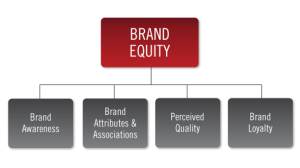by James D. Roumeliotis and Violetta Ihailanen (special guest columnist)
Starbucks is an innovator when it comes to creating brand exposure, content quality and engaging with its audience on social media. It has an impressive following on various social networks and able to cultivate current relationships by encouraging sharing through special promotions, and customized experiences through programs such as My Starbuck Rewards.
Another American company, Farmers Insurance, decided to exploit the benefits of social media to build additional brand awareness, by creating a new campaign that would put their virtual airship on the screens of everyone playing the popular social game Farmville on Facebook. earlier last year, it was reported that Farmville had over 80 million users – and growing.
The raison d’etre of any for profit business is to increase sales and income. For this to occur, a company’s goal and objective is to attract new customers and encourage repeat purchases. Brand awareness signifies how aware existing, as well as potential customers are of your business and its products or services. Ultimately, to achieve successful brand awareness requires that your brand is very familiar and is easily recognizable. Brand awareness is crucial to differentiating your product/service from other similar products/services and competitors.
What does it take to build effective brand awareness?
Brand awareness affects perceptions and attitudes, which drive brand choice and even brand loyalty, which means that without brand awareness there is no brand equity. The latter signifies the value premium that a company achieves from a product/service with an identifiable name as compared to its generic counterpart. Moreover, solid brand equity is an asset that can be sold or leased.
The first dimension distinguishing brand equity is brand awareness. It is influential in consumers’ purchasing decisions and loyalty. This affects customers’ perceptions and attitudes (liking or disliking) and how they build brand preferences.
David Aaker, an authority on marketing & branding, in his various publications defines brand awareness as “a consumer’s ability to recognize or recall a brand in a certain product category”; in other words, the brand is called to mind when a consumer thinks about the category. Greater awareness of a brand increases the likelihood that a consumer will consider it.
Brand awareness has three levels, which is depicted by experts in a pyramid. It ranges from the pyramid’s base as uncertain feelings that begin the moment the brand comes to the consumer’s mind through a name, followed by a belief that the brand is the only one in a particular product category.
Brand Recognition:
This is the lowest level of brand awareness. It refers to consumers’ ability to discriminate between a previously encountered brand and new brands based on prior exposure to the brand. The choice of the brand may not have been supported by the information a customer retrieves from memory.
Thus, brand recognition creates positive feelings toward a brand, and more exposure to a brand name ─ while supported by the company’s image and products, strengthens consumer memory. In a luxury window display, executed by professional merchandisers, the name of the brand will be supported by the ultimate look of the collection.
Brand Recall:
The next level of brand awareness refers to consumers’ ability to recall the name of the brand when provided only with the product category as a cue. It usually takes place in a store, when a consumer compares a brand he/she can recall from memory in the presence of other brands. For example, a product-category cue may be signaled in a department store that has collections from several luxury brands. The significance of brand recognition depends on where a purchasing decision is made: in the store or outside the store. Brand recognition is generally more effective when the product decision is made in a store.
The Purpose of Brand Names & Symbols
Brand names and symbols are the facets of brand awareness that provide basic information for classifying brands as members of product categories. These affect inferences made about brand attributes and benefits.
Jean-Noel Kapferer and Vincent Bastien, authors of the venerable book “The Luxury Strategy”, which includes the notion of ‘Break the Rules of Marketing to Build Luxury Brands”, note that in the luxury domain, because of the complexity of the luxury concept, a “label” reveals the identity, class, knowledge and culture of the brand. It creates, for example, immediate recognition of the unique touch of Chanel, with the particular look of a garment anywhere in the world. In luxury, a name, logo, symbol or color, shapes distinct consumer perceptions ─ forming emotional links to the brand, as well as secondary links to product quality.
Brand name awareness is the basic step in the communication process between brand and consumer that supports the creation of brand identity. To be effective, the name should be easy to remember and have an emotional component. In luxury, a brand name usually belongs to its original creator and founder, as in Yves Saint Laurent, Christian Dior, Louis Vuitton and Coco Chanel.
A prominent brand name that’s different and distinctive enhances recognition. Distinctiveness is achieved through pictorial depiction of the brand name, which facilitates recognition of the symbol. Luxury brands that bear the names of their founders, such as Christian Dior, are already distinctive, whereas less-mature luxury brands could benefit from a pictorial approach, thus enhancing the brand awareness.
Brand symbol is a representation of the brand name and its product category. Companies that want to communicate their product or service effectively should depict their brand name as a symbol. In luxury brands, a symbol usually combines a brand name and a logo.
In this instance, the latter begins to communicate with a customer before a purchase, helping to maintain consistent memories of the brand. A logo provides a great deal of information through a small number of signs that translate the values and vision of the brand.
Other signs of brand recognition
Packaging and colour are also important associative characteristics in identifying the essence of a brand. Such unique appeal helps potential customers easily remember and quickly identify a brand from a distance. A brand’s name and packaging strongly influence quality perceptions and shape a brand’s reputation through purchasing behaviour that leads to brand loyalty Tiffany’s aqua blue colour reflects a relaxing and refreshing state because it resembles the colour of water.
A coordinated color that is used in signs, packaging, web pages and all advertising shows the character of a particular business, which influences customer satisfaction and loyalty. FMRI research (Columbia University’s Medical Center Program for Imaging and Cognitive Sciences) has shown a significant impact of differentiated packages on consumer choice, which can affect a customer’s emotions and increase sales. For example, perfumes presented in distinctively designed bottles linked to the brand name help create a distinctive brand identity.
Brand Awareness Via Social Media
Social media had become an important venue for companies of all sizes in building trust amongst their so-called “fans” or “followers’ who in essence are their consumers. Social media offers an array of functions, which can benefit a company’s reach and objectives. The Harvard Business review recently featured an article on how soft drink brands like Coke and Pepsi use social media to build trust with their consumers. Facebook and Twitter, amongst others, are effective tools for these brands to reinforce and expand their identities ─ as well as enhance customer relationships.
All Things Considered: Strategy & Implementation
A brand can offer the best products in its category, comes backed by the best service and deliver the best overall value; however, it’s meaningless if no one has heard of the brand.
To start with, consumers must be aware that there are different brands in the product/service categories in which the brands operate. Subsequently, they must be aware of the brands ─ ideally, the brands should be the first ones that come to their minds within specific product categories and associated with a USP (unique selling proposition). Consumers should also be able to identify which benefits are associated with the brand. Finally, they should have an idea where the brands are sold.
For companies to succeed in creating effective brand awareness, they should develop and execute a strategy that they can continue to update throughout the development of their brand. Successful brand awareness normally takes time to develop with regards to an effective awareness effort. Furthermore, it takes time for an effective communication to reach potential customers.
A few customers can respond early, while most will take time to hear about the products/services, make a decision to try them, as well as return for more at a later time. Establishing customer loyalty takes even more time as it requires extended experience with any company and its products/services. As a result of the aforementioned actions, positive brand awareness will increase. Brand awareness is essentially the impression people have of a brand.
In the soft drink industry, there is not much, which separates a private/white label soda from a brand name counterpart in terms of taste. However, consumers are very aware of the brands Coca Cola and Pepsi, in terms of their images and names. This higher rate of brand awareness equates to higher sales and further serves as a superior competitive advantage that prevents competitors from gaining additional market share.
__________________________
Footnotes
Article based on extensive research that has been conducted for an MBA dissertation based on the topic ‘The Influence of Brand Identity on Brand Equity in Luxury Segment’ by Violetta Ihailanen who has over 15 years of practical retail luxury experience with renowned fashion brands including Burberry amongst others along with an entrepreneurial stint.
Sources
Aaker (1991; 1996)
Bettman (1979)
Farquhar (et al, 1990)
Hoyer and Brown (1990)
Kapferer and Bastien (2009)
Keller (1993)
MacInnis (1999; 2008)
Rossiter and Percy (1987)
Zaichkowsky (2010)
Wilcox and Laverie (2008)
Your comments are welcome
Request your TWO FREE chapters of this popular book with no obligation.
Learn how to start or expand a business with free courses at


















Informative post. Thanks!
A brand is a company’s personality. Brand awareness is how well consumers know of that company’s character. McDonalds has a different personality than Burger King or Nike. Social media is one of many media that help a company build and foster a brand personality. A brand image is important in the sense that people prefer doing business with companies they like.
Pingback: The Top 10 Most Read Articles in this Blog for 2015 | Unconventional Business Wisdom for the refined entrepreneurial mindset - by James D. Roumeliotis
such an Informative article!!
Pingback: This Blog’s Top 10 Most Read Articles of 2016 | Unconventional Business Wisdom for the refined entrepreneurial mindset - by James D. Roumeliotis
Pingback: This Blog’s Top 10 Most Read Articles of 2017 | Unconventional Business Wisdom for the refined entrepreneurial mindset - by James D. Roumeliotis
Pingback: This Blog’s Top 10 Most Read Articles of 2018 | Unconventional Business Wisdom for the refined entrepreneurial mindset - by James D. Roumeliotis
Pingback: This Blog’s Top 10 Most Read Articles of 2019 | Unconventional Business Wisdom for the refined entrepreneurial mindset - by James D. Roumeliotis